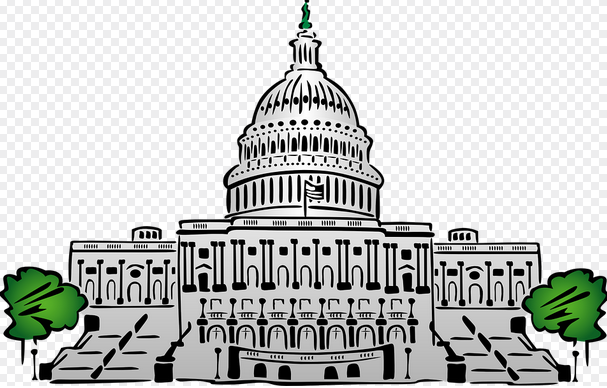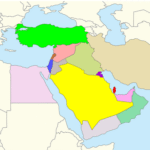The Federal Reserve will also meet with a host of other central banks to decide on interest rates, a meeting that comes just after new data showing a slowdown in U.S. growth and after President Donald Trump publicly decried the Federal Reserve’s head in a move that has shaken financial markets.
Federal Reserve Moves on Horizon as Economy Sends Mixed Signals
The Federal Reserve policy discussions come on the heels of data showing the U.S. GDP shrank in the first quarter and as President Trump continues to push the central bank to lower interest rates. The widely-held assumption is that the U.S. central bank will leave interest rates where they are Wednesday, but it crucially will also be weighing when it might be able to return to its easing cycle and if the June meeting could be in play for a policy shift.
Federal Reserve officials must weigh the risks of recession against fears of another tariff-fueled inflation flare-up. The political backdrop to these decisions continues to matter, as President Trump has habitually condemned the Federal Reserve’s policies and chairman Jerome Powell, and now expressed worries over the independence of the central bank, although he has recently indicated he was backing away from his threats to fire the Fed chairman.
Asia Trade Data and Inflation Tracker and Federal Reserve
Later on, when concrete strides on Sino-U. With U.S. trade talks still hard to find, traders will want to pay attention to the trade figures out of China, on May 9th. This will be the first reading since President Trump applied 145% tariffs on a majority of Chinese imports which will impact the world’s second-largest economy. May 10 will bring inflation numbers for China, and a long-drawn battle against deflation will surely not be a pleasant set of headlines for Beijing as a longer-lasting trade war looms, or appears at least) in the horizon. Consumer price and gross domestic product data for Indonesia, along with information for Thailand and the Philippines, is also due elsewhere in Asia.
The threat of hefty U.S. tariffs has heightened downside risks to growth in the region, raising the risk of more interest rate cuts by central banks in these countries. The market watches Fed actions for any clues it may drop about global economic prospects.
Pleasant Surprises in the UK
Whereas most of the rest of the world is alternatively up to their necks in tariff concerns, the United Kingdom right now is showing some surprising positive signs. The pound sits at the highest level versus the greenback in three months, the FTSE All-Share index stands miles higher over the previous 4 weeks at roughly +10% and expectations for cuts to rates remain unabated.
Deflationary, global trade war influences the Bank of England has no option but to factor into its models for predicting the future path of the UK economy due to our relatively small and open nature of the economy (think a big deal for us given the price of imports will likely be cheaper, hence the slowing wage growth is indeed a bit less than the proverbial sword held to our heads here).
Almost all traders see a quarter-point cut to borrowing costs on Thursday from the Bank of England. Similar policy moves by Sweden’s Riksbank on the same day may boost expectations for an eighth back-to-back interest-rate cut from the European Central Bank in June. Also, UK government bonds are on a rally, ”with the 10-year gilt yield about 56bp under the January peak, probably giving space for the heavily indebted Labor government to explore tax rises and deeper spending cuts.” Inflation: another major relevant issue for the Bank of England could be related to the Federal Reserve’s hands.
Also Read: Trump Remains Obsessed with Interest Rate Policy and the Federal Reserve
Other Key Insights
For emerging market central bankers, the continuing trade war and inflationary fallout mixed with the fresh vulnerabilities from a weaker U.S. dollar create a complicated web of challenges. Unlike most rate-setters who wonder how soon they will be able to slash interest rates again, Brazil’s central bank is headed toward tightening, at least in the near term.
Latin America’s largest economy is facing an uncertain economic outlook and still elevated inflation rates above the target, leading central bank chief Gabriel Galipolo to suggest a rate increase is likely at next week’s Tuesday and Wednesday meeting. At the same time, the central bank is doing a dovish pivot (although it will meet on the same dates as the other two), so sentiment in Poland is a bit more dovish.
The country’s benchmark interest rate has been stable at 5.75% since October 2023, and a rate cut was expected over the following months. But with inflation pressures lower than anticipated, more policymakers have floated the idea that the cost of credit might drop sooner than expected. Monetary policy decisions made by the American Federal Reserve affect emerging market veterans.
There are three-weekend polls that could sway the markets. Polls show a tight contest between Prime Minister Anthony Albanese’s ruling center-left Labor party and the Liberal-National coalition led by Peter Dutton, with all sides pledging significant spending as the nation’s AAA credit rating comes under scrutiny.
Lawrence Wong’s People’s Action Party looks to face a challenge as it faces growing opposition in Singapore’s parliamentary election despite its spending commitments. Romania’s re-run presidential vote, for instance, may usher ultranationalist George Simion into power – an alarming prospect for Brussels, NATO, and markets already jittery over the country’s fragile investment-grade rating.
An election that was canceled last year because of alleged Russian meddling has led to the hard-right Eurosceptic polling ahead in the first round. Fear of a loss of the government’s investment-grade credit rating is growing. The Trust is global but the Federal Reserve’s actions are only focused on the U.S. economy and given that these actions are monitored globally and its impact is seen globally then it is slightly different.
Follow 10X Times for more business news.






